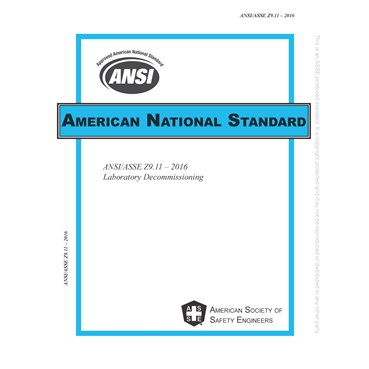
It’s not an easy question to answer. There may be a few exceptions, but I have found scant evidence of general performance metrics for industrial hygiene that apply across multiple industry sectors and meet the needs of different levels within one organization — an ironic fact from a profession so extremely well versed in and focused on the art and science of exposure measurement.
Until recent years, most of the environmental health and safety key performance indicators available to senior managers have been limited to quantitative measures of safety and environmental performance and have focused on results, or “lagging indicators” (lost-time injuries and pollution releases).
Now corporations are increasingly interested in proactive measures, or “leading indicators” of EHS performance. Industrial hygiene staffs must see to it that the EHS metric that “rolls up” to corporate senior managers and the boardroom adequately reflects progress, or lack of progress, in the “H part” of EHS.
Different agendas
First, you need to consider how the purpose of EHS metrics varies at different levels of the organization:- External to the organization, and at the board of directors level, metrics determine acceptability of performance.
- At the CEO and corporate senior manager level, they gauge management culture, establish strategic direction, and drive improvement or other desired change.
- At the business unit level, metrics serve to plan, implement, monitor, and improve business performance delivery systems.
- At the plant or operations level, EHS metrics identify new risks; assess, manage, or prevent known risks; address variance in controls; facilitate improvement and recognize effort.
Traditional IH metrics of exposure assessment are crucial at the site and business unit levels, but generally fail to deliver against objectives at the corporate level. To compensate, progressive corporations have developed an exposure index along the lines of “Number or Percent of Exposures Greater than the Limit.” These numbers might be an adequate metric of IH performance for executives, but they fail to deliver what board members and external stakeholders need to determine acceptability of performance.
Should illnesses, injuries count?
What about counting illnesses and occupational diseases as metrics? After all, injury rates are a good lagging indicator of recent experience that can be used to make decisions about the future. But many occupational diseases have a lag time of many years, making currently reported data more indicative of what your company was doing in the 1970s than of the 21st century. Clearly, illnesses count as a measure of failure of organizations and their managers from long ago. But a better performance metric for IH management effectiveness is needed to benchmark the current efforts of American business.A health risk index
So what single IH metric can all organizations use? One approach is to express all exposures to all agents as a single composite average. This yields a metric that is a performance index of all exposures for all “similar exposure groups” for the entire workforce as a percent of the applicable occupational exposure limit. This “Health Risk Index” is expressed as a number from zero (no one is exposed to anything) to 100 (everyone is exposed to everything at the currently published limit).With all of its blemishes, this metric could be benchmarked with industry peers, drive performance improvement of industrial hygiene, and even assist in reversing the unfortunate decline of the IH profession, all with little to no fear of plaintiff attorneys having a field day with the data.
If a company already conforms to the best practices of exposure assessment, it has essentially all of the data needed to develop a Health Risk Index. Standard protocols and methodologies for exposure assessment have been widely available as early as the publication of the Occupational Exposure Sampling Strategy Manual by NIOSH in 1977. Another well-defined process is the excellent 1991 publication, A Strategy for Occupational Exposure Assessment, published by the American Industrial Hygiene Association.
Exposing existing data
Such exposure assessment methodologies are critical for developing the underlying data that is the basis for proactive corporate performance indicators of industrial hygiene management effectiveness. In fact, implementing a risk index will show where existing data is weak, changing or unknown, driving management to support additional exposure assessment.The infrastructure for reporting health performance measures such as a Health Risk Index exists in many major corporations. Site operations of large corporations routinely report safety statistics at least monthly to business units and/or corporate. Plus, inexpensive software tools are now widely available that can deliver industrial hygiene metrics to senior management. These tools are essential to handle the complexity of the compilation that is required to combine industrial hygiene exposure assessment and roll it up to senior managers.
What’s the best answer?
I believe the best answer for the CEO’s question is, “We have adopted a total risk index for industrial hygiene. Our Health Risk Index is a measure of the total exposure of the total workforce to all known occupational disease risks.”The next question is one that most vice presidents of EHS can anticipate. “How do we compare with our competitors?” Until more companies proactively begin to compile their existing exposure data in a readily comparable metric such as a Health Risk Index, you won’t have a good answer for that one.
